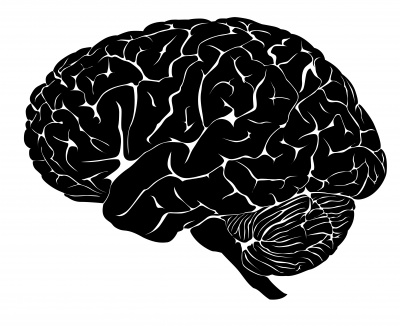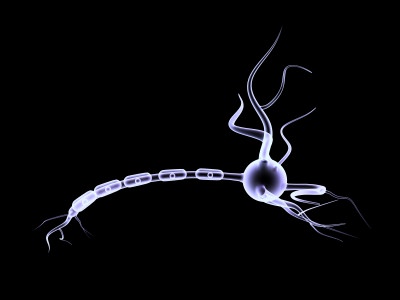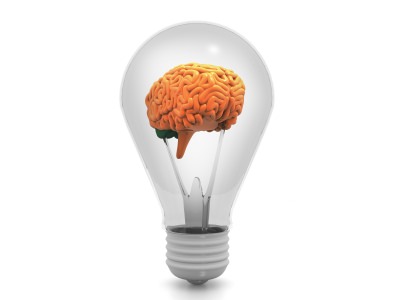Hai dear teachers and pupils.. Here is link of a simple and fun science experiment to explore.
http://www.sciencebob.com/experiments/
Fascinating Information about the Human Brain
Fascinating Information about the Human Brain
The
human brain is the single most complex thing in the known universe.
Even in this time of medical wonders, we still have not been able to
uncover the full secrets of this incredible organ. However, we do know
some things about the most important organ in the body, and here are
some interesting ones you should definitely know about:
|

1.
The belief that humans only use 10% of their brains is incorrect. Each
part of the brain has a specific function and the average person uses
all the various parts of the brain.
2.
Have you ever had such a headache it felt like your brain is going to
explode? That's not actually your brain hurting, because the brain has
no pain receptors at all. Mother nature assumes you don't need it
because it's never exposed (thankfully) and is usually protected by our
thick skull.
.You
must think that your buttocks are the fattiest part of the body, but it
is, in fact, the brain with the highest% of the body, about 60% of it
is fat.
4. The brain has a texture similar to tofu, and enough liquid to fill a 2 liter (half a gallon) tank.
5.
Thought creates 'pathways' that connect different parts of the brain.
The more we repeat a thought, the more that pathway will become more
central, wide and stable. That is why it is important not to think over
and over about negative things, because they become permanent, and
strong, pathways in your mind, and the chances are will force themselves
on you more and more.
6.
We think about 70,000 thoughts a day. A large part of these are
'automatic' thoughts that we repeat a lot, using our most 'established'
thought pathways.
7.
Most people dream about 4-7 dreams a night. 50% of those dreams are
forgotten in the first minutes after waking. And the one we remember is
usually one we were either just dreaming or a mix of all the dreams we
had put together. No wonder they always seem so confusing.
8.
Sleep is usually the time the brain uses to organize and put together
the memories is accumulated throughout the day. And so, in many cases,
before making big decisions it's better to 'sleep on it'.
. The
messages between the various brain cells (neurons) are passed in the
form of weak electrical pulses. The brain creates 23 watts of
electricity while awake, enough to light a lightbulb.

An image of a neuron
10. While we laugh, about 5 areas lit up in the brain simultaneously. So it's no laughing matter, laughing.
The
reason tickling makes us laugh is that the brain becomes 'surprised' by
this kind of touch, which is first interpreted as a threat. The
uncontrollable laughter is actually a panic response by the body. That
is why it's not possible to tickle ourselves.
12.
The human brain has more 'wrinkles' and crevices than those of other
animals. In this way, the brain gets more surface space while staying at
around the same size, and it is part of the reason for our increased
intelligence.
13.
Brain cells (neurons) are not only found in the brain but exist
everywhere in the body the brain needs to send orders to, and all of
them are connected to the brain.
14.
Some archaeological findings think that our cranium has gotten smaller
over the ages, but that doesn't mean our brain has become less powerful,
only more efficient.

15.
The brain alone uses 20% of all the oxygen we breathe and over 25% of
the sugar we consume. Meaning, deep thoughts might cost the body
resources just like sports can. Who said chess players are not athletes
too?
16.
The female and male sexual hormones cause a different brain to develop.
Studies have found siginificant difference in the brain functions of
male and female during social situations, decision making, pressure
situations and more.
17.
The brain isn't fully developed until the teen years are over.
Multitasking, showing empathy and good decision making are some of the
skills that develop a little later. This, we're sure you'll agree -
explains A LOT.
18.
The brain is constantly changing. Damage to one part of it may cause
that part to change to a different location in the brain, especially if
you are a baby or a child. Beyond that, every thought, experience or
skill we encounter and learn changes the structure of our brain.
19.
Memories aren't built in a linear progression. We only remember
'pictures' or moments, and we put together a story from them ourselves.
That is why it's tricky to trust your memory, because you may have done
some 'editing' without knowing it.
|
Seven Wonders of the Underwater world
Posted by
PKKBA.blogspot.com/
at
07:17

Many
lists have been made touting the seven wonders of one thing or another
but one list that still needed to be created was a list describing the
Top Seven Wonders of the Underwater World. In 1989, CEDAM International,
an international diving association, decided to write up their own list
describing what they thought were the most spectacular underwater sites
in the world. And the 7 wonders of the underwater world includes, after the break...
01. The Galapagos Islands - Ecuador
Located
in the Pacific Ocean, west of Ecuador are the Galapagos Islands. The
islands sprouted from the earth’s crust from a sub oceanic lava vent on
the ocean floor. The relatively new volcanic geology created a habitat
rich with flora, fauna, and animal life that have been studied and
admired by numerous travelers, scientists, and nature-lovers from all
over the world.
02. The Northern Red Sea - Jordan
Some
of the most beautiful coral reefs in the world are located in the
Northern Red Sea. Considered by some to be the underwater “Garden of
Eden,” this reef has some of the most diverse sea life in the world.
Located in the Indian Sea between Asia and Africa, the Northern Red Sea
spreads out over 169,000 square miles. More than 70 species of hard
coral, 30 species of soft coral, over 500 species of fish including
hundreds of additional marine life species classified as invertebrate
call this reef home.
03. Palau - Philippines
Palau
is an island nation located about 500 miles from the Philippines. Some
of the most beautiful fish in the world live in these reefs. More than
350 species of hard corals, 200 species of soft corals, 300 species of
sponges, and 1,300 species of reef fish call this coral reef home.
04. Lake Baikal - Russia
Lake
Baikal is the second most voluminous fresh water lake in the world.
Located in Siberia, Russia, the lake has an average depth of 2,442 ft
and contains roughly 20% of the world’s surface fresh water. At 25
million years old and with a depth of 2442ft makes this lake the oldest
and deepest lake in the world.
05. The Great Barrier Reef - Australia
The
only living thing that can be seen from outer space that is larger than
the Great Wall of China is the Great Barrier Reef, the largest coral
reef system in the world. Located in Australia, this reef system is
composed of 2,900 individual reefs and 900 islands making it 1,600 miles
in length. The overall structure of the reef is composed of billions of
tiny organisms, known as coral polyps. Along with the ocean, the reef
creates a habitat that supports a great diversity of sea life, some of
which are endangered. Because of the vast beauty of the Reef, people
find it very appealing to visit thus bringing many tourist dollars to
the area, which help to put in place protective measures to hopefully
protect this valuable wonder for many generations to come.
06. The Deep Sea Vents - Ecuador
Deep
Sea Vents otherwise known as hypothermal vents, are fissures along the
ocean floor that release superheated water from below the Earth’s crust.
The hot water is saturated with dissolved minerals from the crust,
mostly sulfides, which crystallize to create a chimney-like enclosure
around each vent. When the superheated water in the vent reaches the
frigid ocean water, many minerals are released, creating the distinctive
black color. The metal sulfides that are deposited can become massive
sulfide ore deposits in time. The Deep Sea vents were first discovered
in 1977 near the Galápagos Islands by the National Oceanic and
Atmospheric Administration. They are found to exist in both the Pacific
and Atlanta Ocean at an average of 2100 meters deep.
07. The Belize Barrier Reef - Belize
The
second largest reef system in the world is the Belize Barrier Reef.
Located on the coast of Belize, this reef is considered to be one of the
best spots in the world to dive and snorkel. It is over 186 miles long
and is part of the larger Mesoamerican Barrier Reef System that
stretches from Cancun all the way to the Honduras, for a total of 560
miles. Only 10% of this reef has actually been researched and
documented.
Subscribe to:
Posts (Atom)













